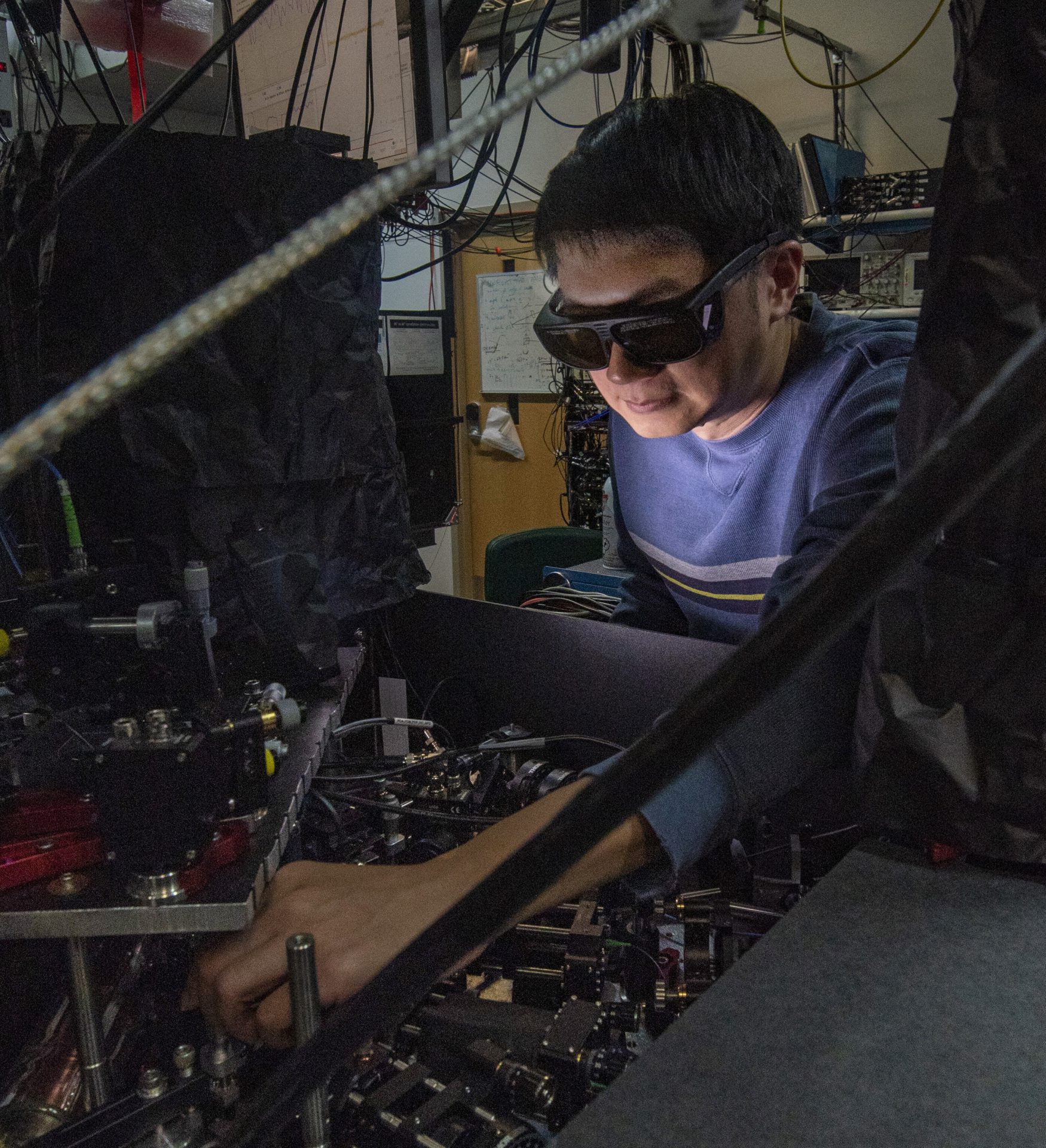
Physicists at the National Institute of Standards and Technology (NIST) have managed a molecule-atom entanglement. They entangled an electrically charged atom and an electrically charged molecule, paving the road towards a hybrid quantum information system.
Like atoms, molecules have various internal energy levels but also rotate and vibrate at many different speeds and angles.
The experiment successfully entangled the properties of an electron in the atomic ion with the rotational states of the molecule so that measurements of one particle would control the properties of the other.
The researchers entangled two energy levels of a calcium atomic ion with two different pairs of rotational states of a calcium hydride molecular ion, which is a calcium ion bonded to a hydrogen atom. The molecular qubit had a transition frequency — the speed of cycling between two rotational states — of either low energy at 13.4 kHz or high energy at 855 GHz.
First, the team trapped and cooled the two ions to their lowest-energy states. The pair repelled each other due to their physical proximity and positive electric charges, and the repulsion acted like a spring locking their motion. Laser pulses added energy to the molecule’s rotation and created a superposition of low-energy and high-energy rotational states, which also set off a shared motion, so the two ions began rocking or swinging in unison, in this case in opposite directions.
The molecule’s rotation was thus entangled with its motion. More laser pulses exploited the two ions’ shared motion to induce the atomic ion into a superposition of low and high energy levels. In this way, entanglement was transferred from the motion to encompass the atom. The researchers determined the state of the atomic ion by shining a laser on it and measuring its fluorescence, or how much light it scattered.
The NIST researchers demonstrated the technique with two sets of the molecule’s rotational properties, successfully achieving entanglement 87% of the time with a low-energy qubit and 76% of the time with a higher-energy qubit.
This kind of mixed-platform — molecule-atom entanglement — quantum systems could offer versatility like that of conventional computer systems, which, for example, can exchange data among an electronic processor, an optical disc, and a magnetic hard drive. These new techniques may also be useful in making quantum sensors or performing quantum-enhanced chemistry. (Phys.org)
The paper has been published in Nature.
